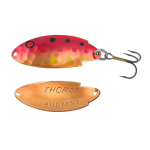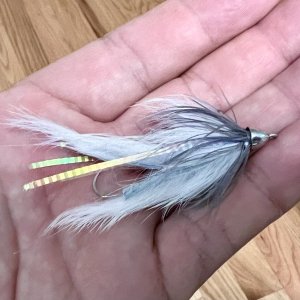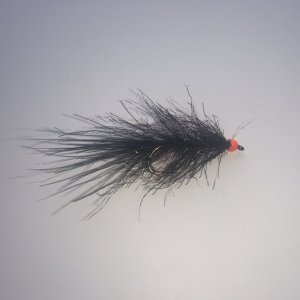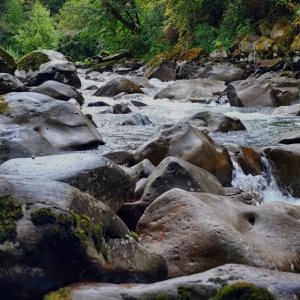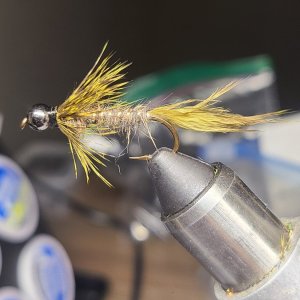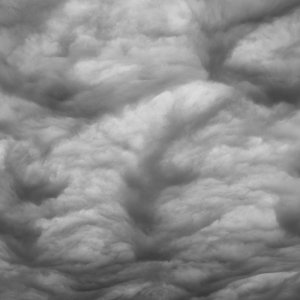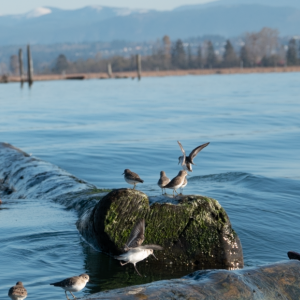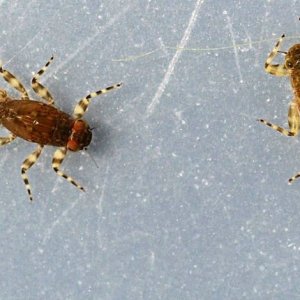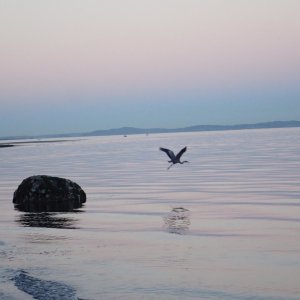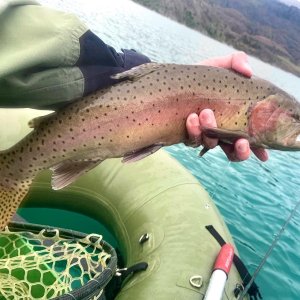You are using an out of date browser. It may not display this or other websites correctly.
You should upgrade or use an alternative browser.
You should upgrade or use an alternative browser.
How would you fish this? Beginner in need of help.
- Thread starter Aleforme
- Start date
If you want to get dirty throwing some hardware, I've always had better luck using a spoon in water like that, buoyant or cyclone. Good finish for cutts and high lakes.Just used small spinners in the past.
Attachments
If you want to get dirty throwing some hardware, I've always had better luck using a spoon in water like that, buoyant or cyclone. Good finish for cutts and high lakes.
Ha, spinners and spoons are very tempting and that's what I have used in the past. But, I'm going all in on Fly this year. I've been catching a bit fly fishing since starting earlier this year but I want to build some confidence and skills with the fly rod. Same for my wife. There are a lot of other locations in this area that I will be fishing where I know I can catch but this particular area has always been a challenge. I must conquer it!
The bite was good for about 10 minutes in the past and then I think crashing the area with spinners and spoons just spooked everything. I think the lighter more gentle approach of some flies will help.
Last edited:
cedarslug
Steelhead
the water is moving fast but the circled areas have a much lower flow with some fairly deep pools of 4 to 8 feet and I know the trout hold up in the areas. I have been to this section of this river maybe 5 times now over the last 7 or so years and the flows have always been very similar.
... The water is gin clear so maybe something flashy like a purple duracell?
Deep pools and clear water can provide fish greater degree of vision. Here's an article from Fly Fisherman entitled "How Trout See" that provides more detail. Essentially, the deeper the fish are the larger their cone of vision becomes. So, with deep clear pools, you'll need to avoid spooking them: sneaking up on them from behind, being aware of your shadow, carefully casting over them, etc.
If you do feel like you've spooked them, give them a break, and work another section of the water. Looking forward to hearing about your time on the water!
Thanks for the link. I'll definitely give a it a read. That's my plan this year, go in softly and quietly and fish the same way.Deep pools and clear water can provide fish greater degree of vision. Here's an article from Fly Fisherman entitled "How Trout See" that provides more detail. Essentially, the deeper the fish are the larger their cone of vision becomes. So, with deep clear pools, you'll need to avoid spooking them: sneaking up on them from behind, being aware of your shadow, carefully casting over them, etc.
If you do feel like you've spooked them, give them a break, and work another section of the water. Looking forward to hearing about your time on the water!
From what I know about cutthroat, there should be a fish holding at that seam between the current and soft water behind that big rock right in the center of the top picture. It looks like a difficult area to fish with the water running to the right in the top of the picture than making a quick left turn just a few feet later. Excellent habitant and a good choice of home for a cagey fish.Just for fun, another shot from another year that I took.

And a shot from down river 75 to 100 feet or so looking up river towards the are of interest. That far seam on the looks interesting.

From what I know about cutthroat, there should be a fish holding at that seam between the current and soft water behind that big rock right in the center of the top picture. It looks like a difficult area to fish with the water running to the right in the top of the picture than making a quick left turn just a few feet later. Excellent habitant and a good choice of home for a cagey fish.
Definitely a spot I'll be hitting for sure!
1. rip some meat through there.
2. rip some meat through there.
3. rip some meat through there.
4. rip some meat through there.
in that order.
that's how you're going to find out just how big of fish hang out in that river....whether you catch them or not.
I mean shoot, just Monday when I was fishing the Deschutes with a smaller streamer (~3"), I moved several fish a bit larger than the largest I caught (16" on the dot)....but you've gotta commit to it.
2. rip some meat through there.
3. rip some meat through there.
4. rip some meat through there.
in that order.
that's how you're going to find out just how big of fish hang out in that river....whether you catch them or not.
I mean shoot, just Monday when I was fishing the Deschutes with a smaller streamer (~3"), I moved several fish a bit larger than the largest I caught (16" on the dot)....but you've gotta commit to it.
This is textbook tight-lining water. Conventional fly fishing will never be as productive, in scenarios like this. I would encourage you to give it a try. It is much easier than most people think; when I was teaching my wife, she caught a fish on her first cast. It is also cheaper than ever, to get into; Greys have a decent beginner combo, for about $200.
I wouldn't bother with drop-shotting. That technique can work OK, on rivers that are fairly uniform. On volatile freestones, like this, you have to constantly mess with the weight of both the flies and the shot.
If I was tight-lining this water, I would use one of the three approaches below, with 6-7x fluoro tippet being used in all cases.

 troutbitten.com
troutbitten.com
I specifically wouldn't bother with any double nymph rigs; the flies are going to pull on each other too much. Instead of getting a decent drift with one fly, you just end up with two flies drifting poorly.
I wouldn't bother with drop-shotting. That technique can work OK, on rivers that are fairly uniform. On volatile freestones, like this, you have to constantly mess with the weight of both the flies and the shot.
If I was tight-lining this water, I would use one of the three approaches below, with 6-7x fluoro tippet being used in all cases.
- A single #10 hare's ear or #6 Pat's stonefly.
- A #14 EHC, #10 parachute Adams or #6 foam stonefly/terrestrial, with a 1ft dropper to a #10 hare's ear or #6 Pat's stonefly. The key here is to keep the dropper shallow; deep suspension nymphing is ineffective, on water like this.
- A #6 or #10 wooly bugger. Dead drifting might imitate a stonefly or other large nymph. Jigging might imitate a crayfish. Stripping downstream might imitate a fleeing sculpin. You can also try "the slow slide", per the link below.

Streamer Presentations -- The Deadly Slow-Slide
The slow-slide combines drifting and swinging, showing trout a broadside view of the streamer and keeping it available, near structure, for a long time.
 troutbitten.com
troutbitten.com
I specifically wouldn't bother with any double nymph rigs; the flies are going to pull on each other too much. Instead of getting a decent drift with one fly, you just end up with two flies drifting poorly.
Last edited:
1. rip some meat through there.
2. rip some meat through there.
3. rip some meat through there.
4. rip some meat through there.
in that order.
that's how you're going to find out just how big of fish hang out in that river....whether you catch them or not.
I mean shoot, just Monday when I was fishing the Deschutes with a smaller streamer (~3"), I moved several fish a bit larger than the largest I caught (16" on the dot)....but you've gotta commit to it.
So.................................. streamers? LOL.
I hope to get to this spot a couple times during my trip but it takes some time and effort to get to so we'll see. If nothing else, I'll fish it for a bit, have some lunch and a brew and then go back to it.
This is textbook tight-lining water. Conventional fly fishing will never be as productive, in scenarios like this. I would encourage you to give it a try. It is much easier than most people think; when I was teaching my wife, she caught a fish on her first cast. It is also cheaper than ever, to get into; Greys have a decent beginner combo, for about $200.
I wouldn't bother with drop-shotting. That technique can work OK, on rivers that are fairly uniform. On volatile freestones, like this, you have to constantly mess with the weight of both the flies and the shot.
If I was tight-lining this water, I would use one of the three approaches below, with 6-7x fluoro tippet being used in all cases.
- A single #10 hare's ear or #6 Pat's stonefly.
- A #14 EHC, #10 parachute Adams or #6 foam stonefly/terrestrial, with a 1ft dropper to a #10 hare's ear or #6 Pat's stonefly. The key here is to keep the dropper shallow; deep suspension nymphing is ineffective, on water like this.
- A #6 or #10 wooly bugger. Dead drifting might imitate a stonefly or other large nymph. Jigging might imitate a crayfish. Stripping downstream might imitate a fleeing sculpin. You can also try "the slow slide", per the link below.

Streamer Presentations -- The Deadly Slow-Slide
The slow-slide combines drifting and swinging, showing trout a broadside view of the streamer and keeping it available, near structure, for a long time.troutbitten.com
I specifically wouldn't bother with any double nymph rigs; the flies are going to pull on each other too much. Instead of getting a decent drift with one fly, you just end up with two flies drifting poorly.
Thanks man. I'll check that article out. You might have point here and that's kind of what I was initially envisioning due to all the moving water and flows in different directions. It's a fairly large area but when look at from the point of fishing. it gets much smaller.
Damn what a gorgeous river! I recommend that you pick me up in Mill Creek before you head out to it and I'll give you on the river instruction, flies, and beer.
Hard to go wrong with a size 6 or 8 bead/cone head black wooly bugger, after trying the dry flies for a bit.
You had me at "Beer"!
And yeah, the black cone head WB is on the menu for sure at some point.
RCF
Life of the Party
The fish have a very narrow window to get something to eat in that water. They are not going to swim up, inspect it, decide if it looks right, and then chomp on it. If it is in their field of view and looks like a morsel, they have to be on it immediately or it has gone downstream...
6x? I just threw up in my mouth a little bit....This is textbook tight-lining water. Conventional fly fishing will never be as productive, in scenarios like this. I would encourage you to give it a try. It is much easier than most people think; when I was teaching my wife, she caught a fish on her first cast. It is also cheaper than ever, to get into; Greys have a decent beginner combo, for about $200.
I wouldn't bother with drop-shotting. That technique can work OK, on rivers that are fairly uniform. On volatile freestones, like this, you have to constantly mess with the weight of both the flies and the shot.
If I was tight-lining this water, I would use one of the three approaches below, with 6-7x fluoro tippet being used in all cases.
- A single #10 hare's ear or #6 Pat's stonefly.
- A #14 EHC, #10 parachute Adams or #6 foam stonefly/terrestrial, with a 1ft dropper to a #10 hare's ear or #6 Pat's stonefly. The key here is to keep the dropper shallow; deep suspension nymphing is ineffective, on water like this.
- A #6 or #10 wooly bugger. Dead drifting might imitate a stonefly or other large nymph. Jigging might imitate a crayfish. Stripping downstream might imitate a fleeing sculpin. You can also try "the slow slide", per the link below.

Streamer Presentations -- The Deadly Slow-Slide
The slow-slide combines drifting and swinging, showing trout a broadside view of the streamer and keeping it available, near structure, for a long time.troutbitten.com
I specifically wouldn't bother with any double nymph rigs; the flies are going to pull on each other too much. Instead of getting a decent drift with one fly, you just end up with two flies drifting poorly.
In all seriousness, that's actually a great approach. Just not one that I personally would start with. It really depends if one is trying to catch almost every fish in the pool (minus the largest) or get the largest one and call it good. I love reading about all sorts of solutions to a "problem" here. There's almost no wrong answer...but to your point, suspension nymphing in that type of water is a fools errand.
6x? I just threw up in my mouth a little bit....
I might go all the way up to 4x, if the wooly bugger is heavy enough.
Have you spent much time with streamers on your euro rod, yet?
considering the average size of streamers I typically like to fish for trout, not much.....but some. and those little 1.5"-2" streamers tied up on a a little jig hook certainly work great via euro-style...just not my personal preferred method of fishing streamers. Most of my largest fish come on larger streamers as well.Have you spent much time with streamers on your euro rod, yet?
Whoa, you just blew right past 4.5x!?I might go all the way up to 4x, if the wooly bugger is heavy enough.
Have you spent much time with streamers on your euro rod, yet?

